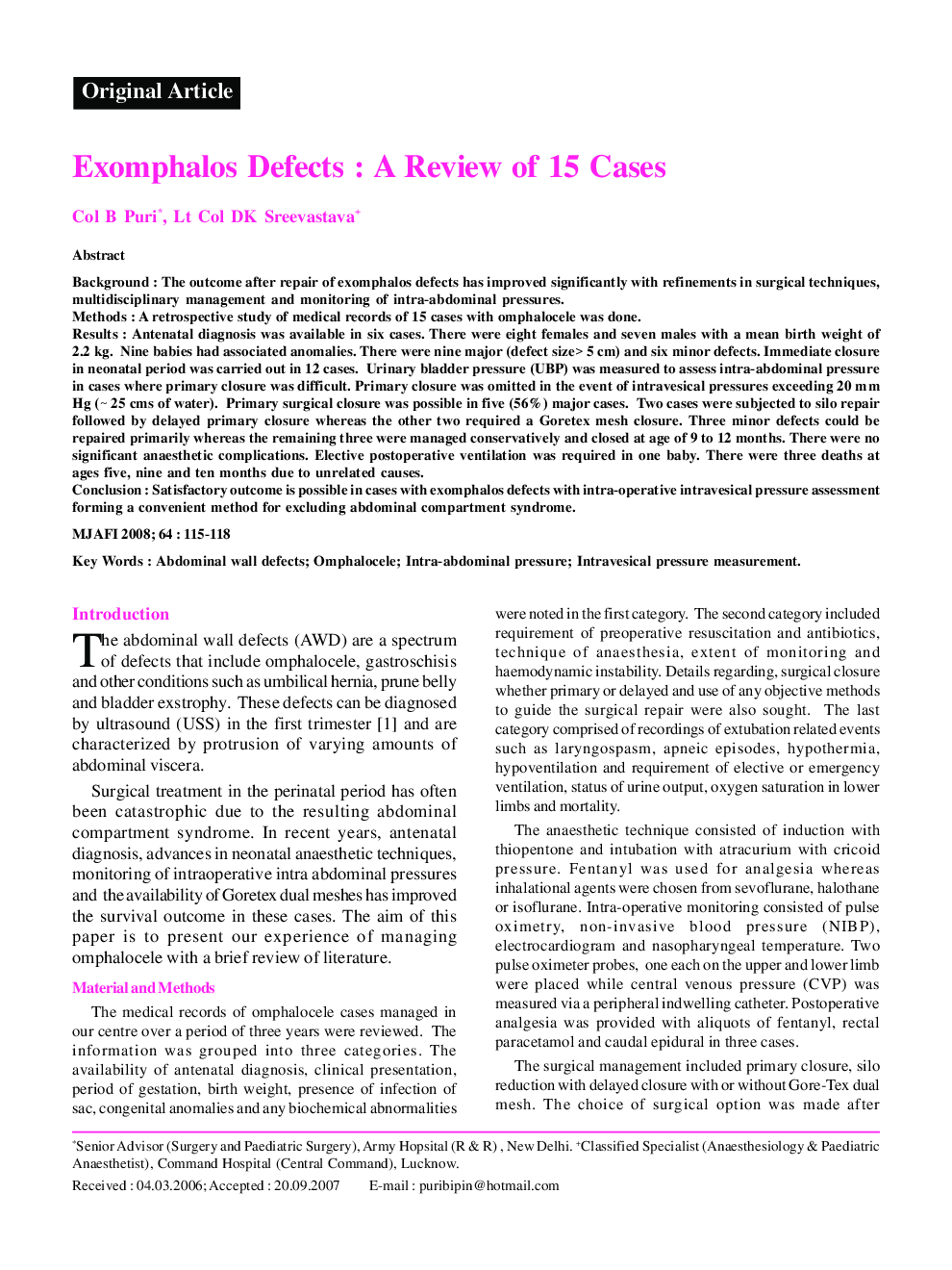| Article ID | Journal | Published Year | Pages | File Type |
|---|---|---|---|---|
| 3162447 | Medical Journal Armed Forces India | 2008 | 4 Pages |
BackgroundThe outcome after repair of exomphalos defects has improved significantly with refinements in surgical techniques, multidisciplinary management and monitoring of intra-abdominal pressures.MethodsA retrospective study of medical records of 15 cases with omphalocele was done.ResultsAntenatal diagnosis was available in six cases. There were eight females and seven males with a mean birth weight of 2.2 kg. Nine babies had associated anomalies. There were nine major (defect size> 5 cm) and six minor defects. Immediate closure in neonatal period was carried out in 12 cases. Urinary bladder pressure (UBP) was measured to assess intra-abdominal pressure in cases where primary closure was difficult. Primary closure was omitted in the event of intravesical pressures exceeding 20 mm Hg (~ 25 cms of water). Primary surgical closure was possible in five (56%) major cases. Two cases were subjected to silo repair followed by delayed primary closure whereas the other two required a Goretex mesh closure. Three minor defects could be repaired primarily whereas the remaining three were managed conservatively and closed at age of 9 to 12 months. There were no significant anaesthetic complications. Elective postoperative ventilation was required in one baby. There were three deaths at ages five, nine and ten months due to unrelated causes.ConclusionSatisfactory outcome is possible in cases with exomphalos defects with intra-operative intravesical pressure assessment forming a convenient method for excluding abdominal compartment syndrome.
